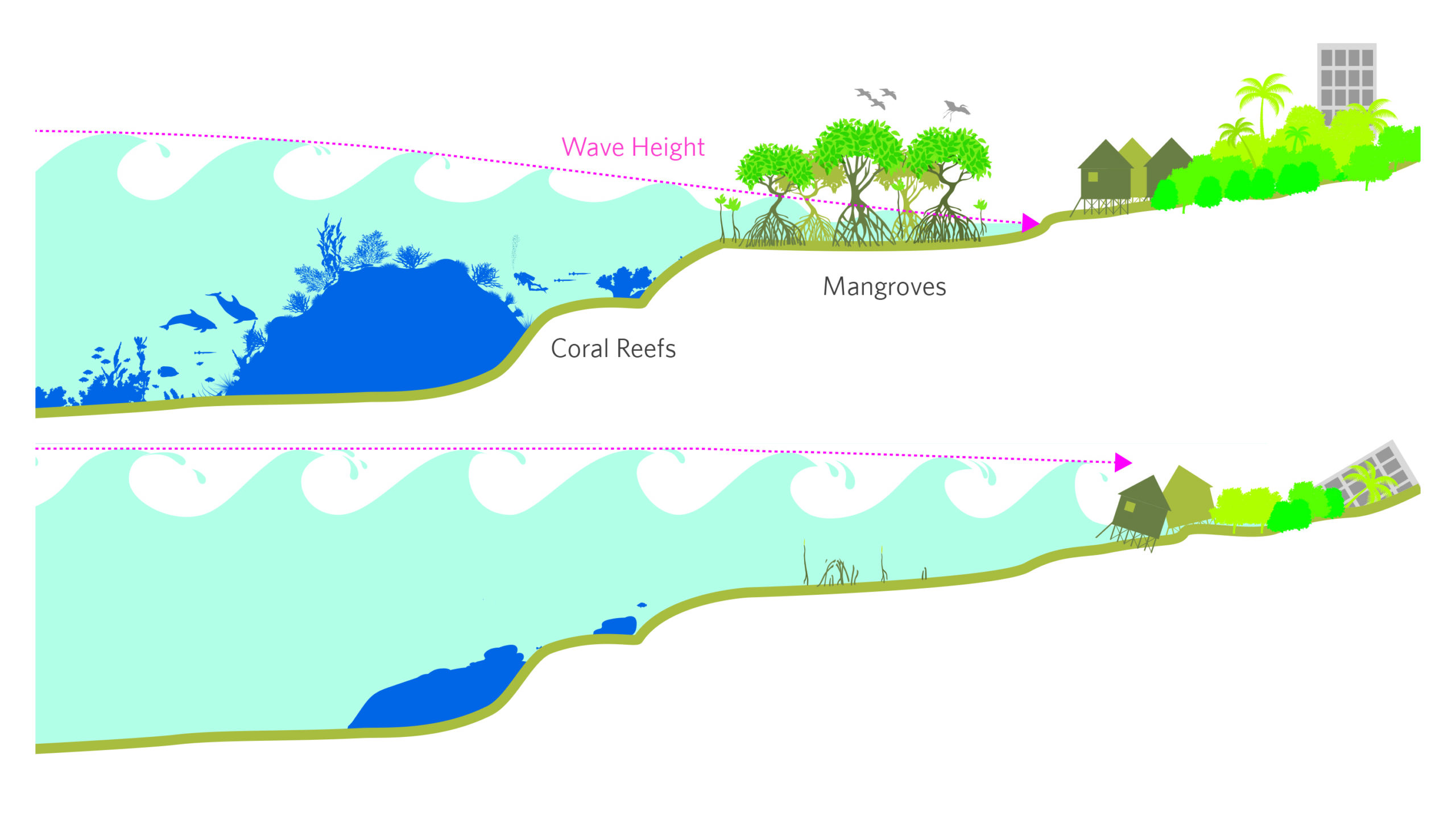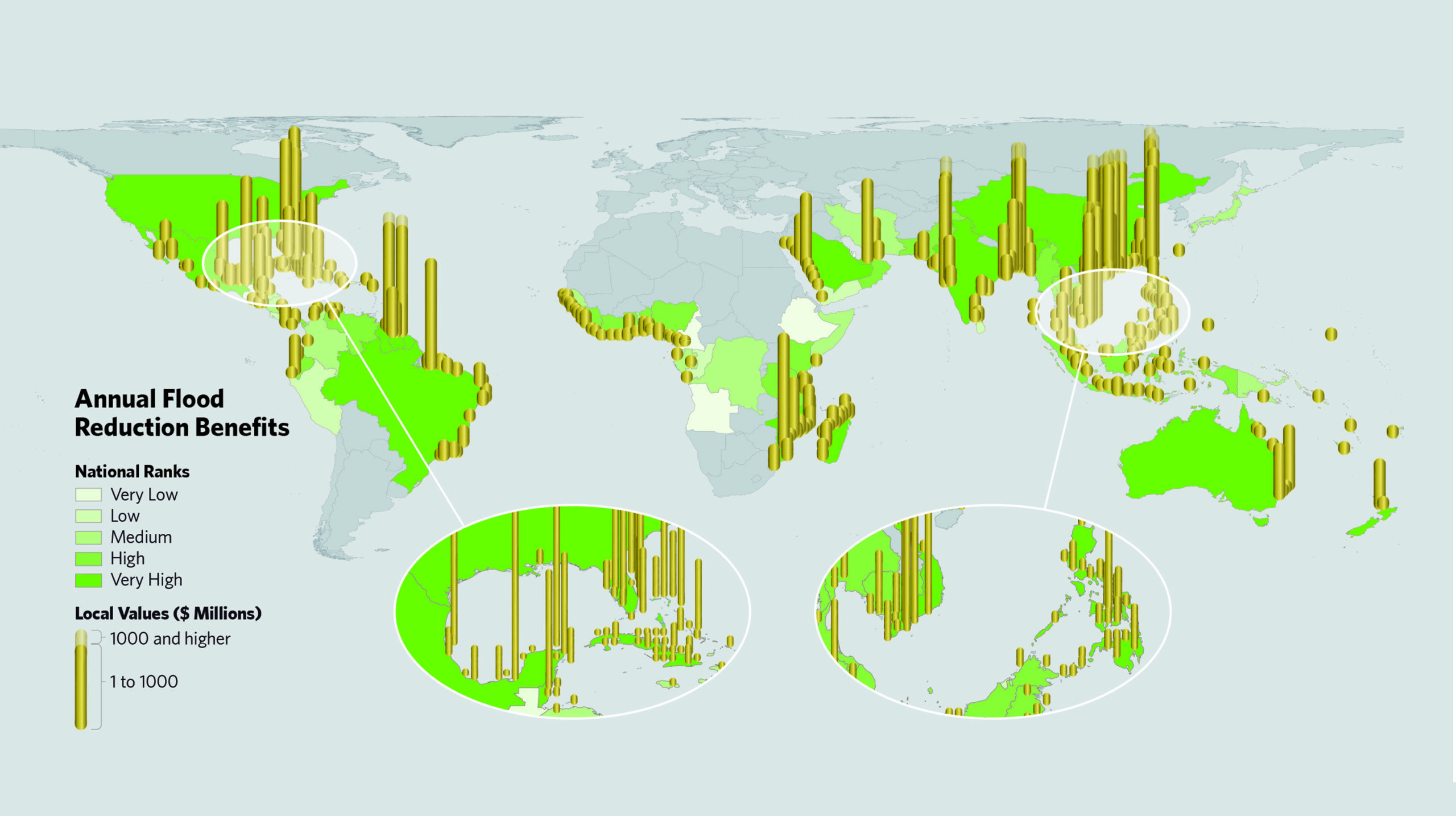These results demonstrate that mangrove conservation and restoration can be an important part of the solution for reducing risks to coastal communities. Here are some of the key findings from this work:
- Mangroves reduce annual flooding to more than 18 million people
- Without mangroves 39% more people would be flooded annually, and flood damages would increase by more than 16% and US $82 billion annually
- Vietnam, India, Bangladesh, China, and the Philippines receive the greatest benefits from mangroves in terms of avoided flooding of people
- China, USA, India, Mexico, and Vietnam receive the greatest benefits in annual flood damages to property
- The countries that receive the greatest overall risk reduction benefits from mangroves are Guinea, Mozambique, Guinea-Bissau, Sierra Leone, and Madagascar.
By providing ranked value of the protection benefits provided by mangroves globally, this work enables mangroves to be better managed as natural coastal infrastructure within policy and management decisions worldwide.

